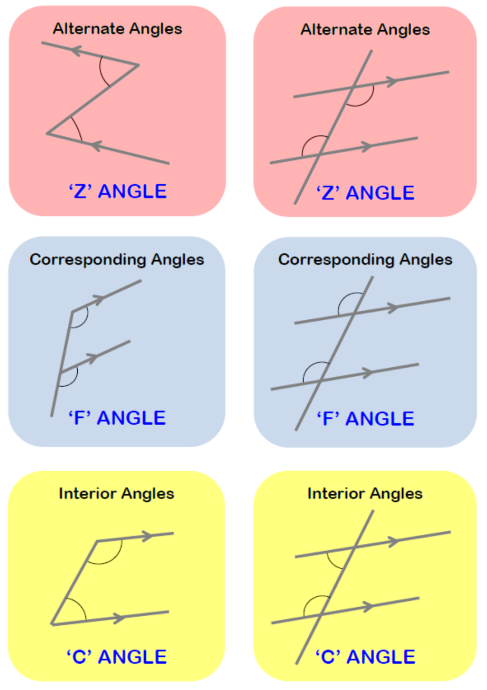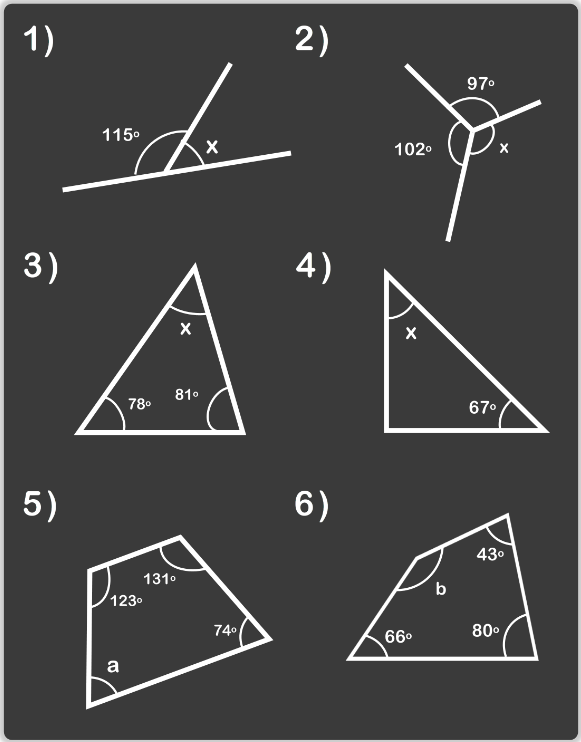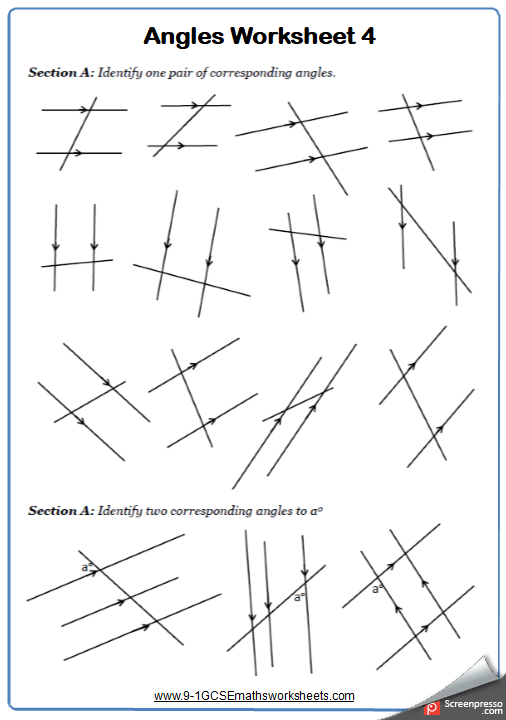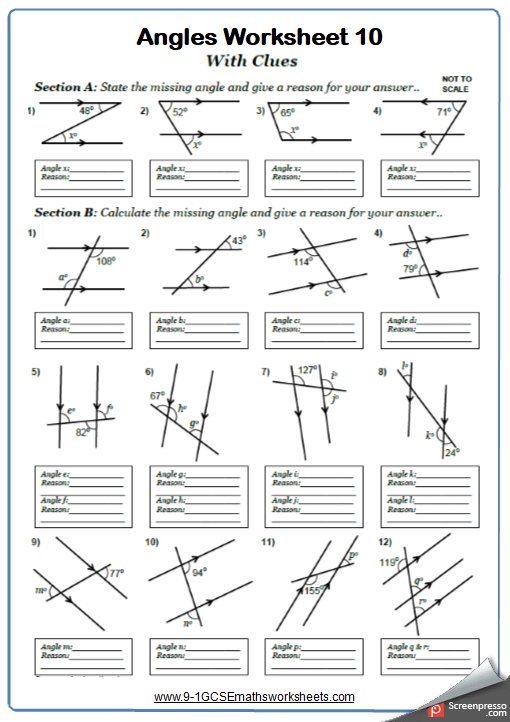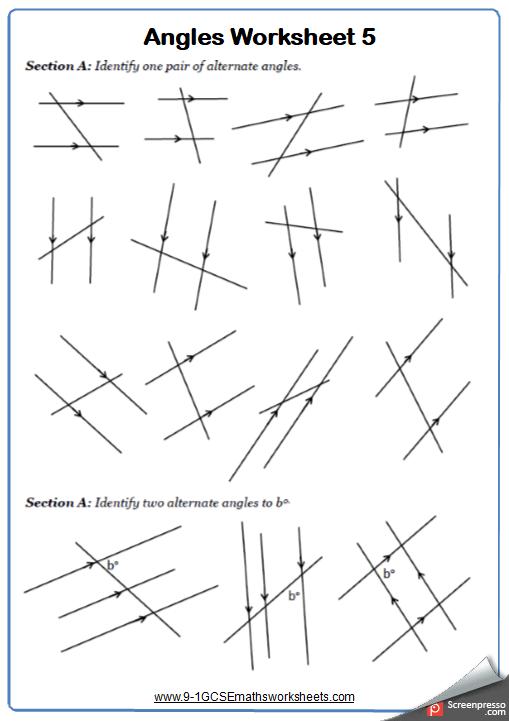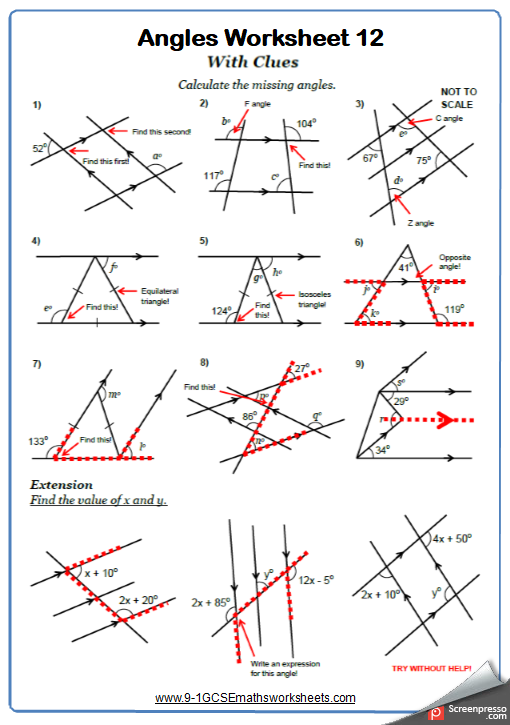Angles On Parallel Lines Worksheets - Practice
Angles on Parallel Lines worksheets for year 7, year 8, year 9 and year 10. Angles on Parallel Lines worksheets for students working at foundation gcse level and key stage 3. Each Angles on Parallel Lines worksheet contain questions at grade 2, grade 3 or grade 4 for 9-1 GCSE maths in the UK national curriculum.
Angles on Parallel Lines
Parallel lines are lines that never touch. Another way to describe parallel lines is to say that the lines never intersect. When a line cuts through a pair of parallel lines interesting things happen. There are angles on parallel lines that are equal when a line cuts through a pair of parallel lines. The names of these angles are called alternate angles, corresponding angles, vertically opposite angles and interior angles. The quick and easy way to remember these names and their properties is by saying "Z angle", "F angle" and "X angle".
Types of Angles on Parallel Lines
Below shows an example of pairs of equivalent angles formed on parallel lines.
Angles on Parallel Lines Facts
For the angles on parallel lines worksheets on this page students will want to remember the more basic angle rules which are:
- Angles on a straight line add up to 180 degrees.
- Angles in triangles add up to 180 degrees.
- Angles in quadrilaterals add up to 360 degrees.
Angles Questions
Below is an angles on parallel lines worksheet starter. The angles on parallel lines worksheet starter asks you to find the missing angle on straight-lines, inside triangles and inside quadilaterals. The answers are at the bottom of the page.
Angles On Parallel Lines Worksheets – New & Engaging
Angles Starter Answers
- 65 degrees
- 161 degrees
- 29 degrees
- 23 degrees
- 32 degrees
- 171 degrees

